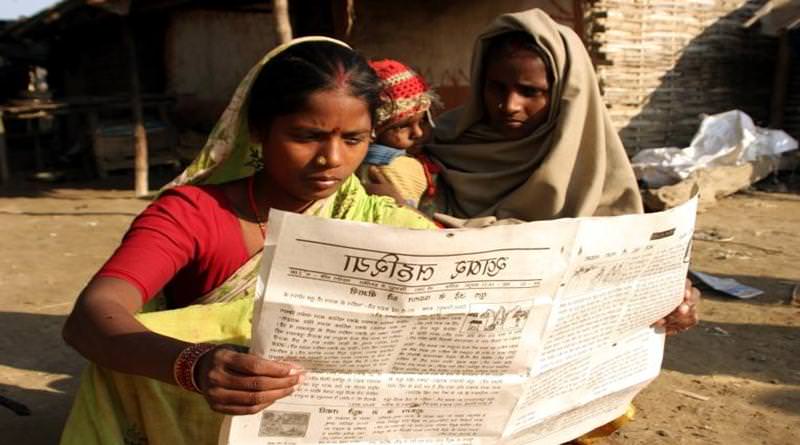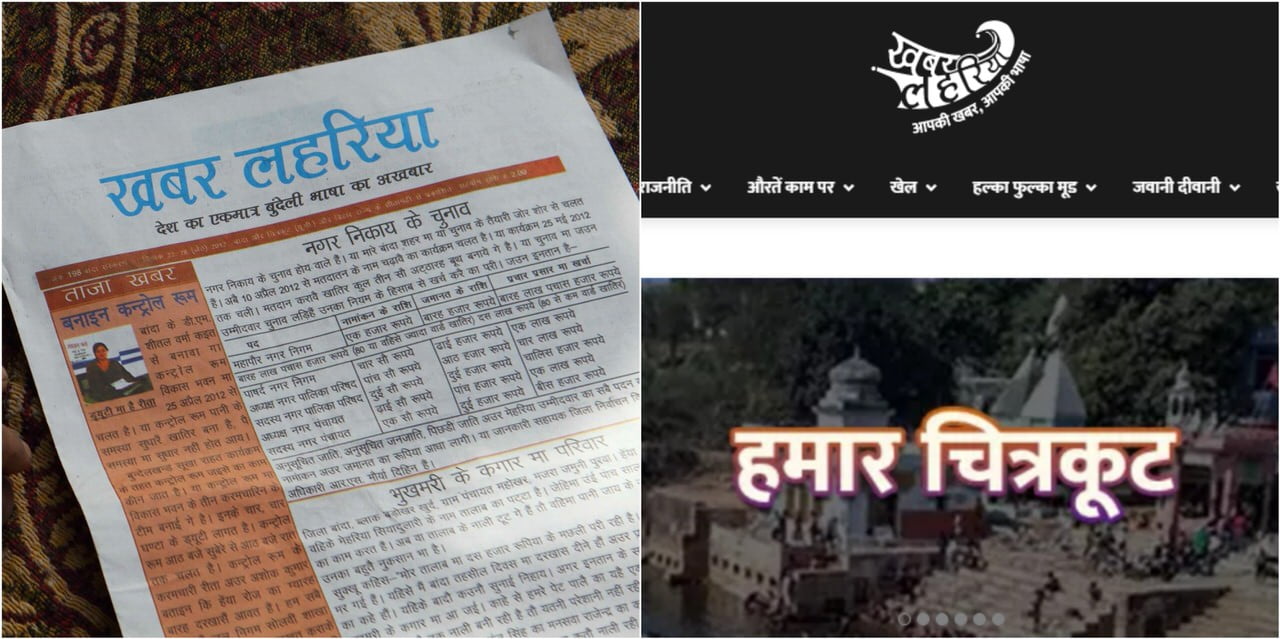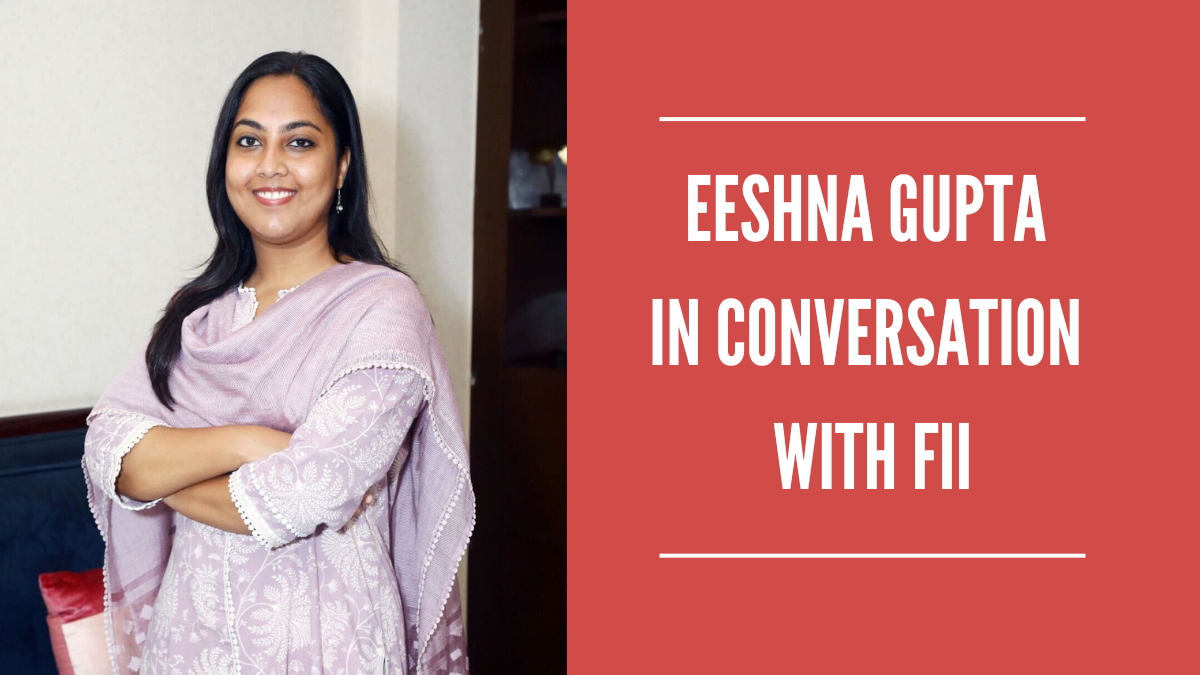Khabar Lahariya is a path-breaking media channel comprising Dalit women journalists which primarily publishes local stories. They initially started out as a newspaper publishing portal but made the change to digital media a year ago. Their publishing also entails publishing in the dialects Avadhi and Bundeli.
They have been the recipient of numerous awards such as the Laadli Media Award, Rani Laxmibai Award For Bravery, UNESCO King Sejong Award For Literacy and many more. They can be followed on YouTube, Facebook and Twitter.
The following video brings to us the Khabar Lahariya Manifesto:
FII: How did the concept for Khabar Lahariya arise?
Khabar Lahariya: The precursor to Khabar Lahariya was Mahila Dakiya, a four-page broadsheet, which was popular for its innovative creation and productions of content. The Khabar Lahariya website states that:
Breaking the barrier between ‘writers’ and ‘readers’, newly-literate women were trained to write for themselves and for their peers, entering a world of print publication that had hitherto been reserved for men. Not only did the resulting publication break caste and gender barriers, it also enabled the sustained production of reading material in local languages and promoted an overall environment of learning.
When the Mahila Dakiya experiment ended in 1995, it left behind a legacy of literacy, a hunger for information and a model of women’s empowerment. In 2002, Khabar Lahariya stepped into the shoes of its precursor, starting with a group of seven women who wrote and produced a fortnightly newspaper in Bundeli and Hindi, covering everything from the local to the global.

Image Credit: Black Ticket Films
FII: Can you comment on the importance of preserving local languages?
KL: Language, both written and oral, constructs, defines and represents our reality. Language is political. It is laden with power. And there are clear hierarchies. Written languages are up there on the evolutionary ladder. Oral traditions are mere dialects.
Khabar Lahariya‘s predecessor Mahila Dakiya, a local language broadsheet had strong ideological and political underpinnings. A critical part of this ideological project was to respect women’s ways of expressing themselves. Since the women’s life-worlds, experiences, sense of imagery were invariably expressed in idiomatic Bundeli, there was a happy, almost organic mix of Hindi and Bundeli in the early days of Mahila Dakiya.
Communicating through poetry in Bundeli, for example, came naturally to the rural women in the Bundelkhand region. They could write anything in poetic meter – a news item, a personal experience, even a report of an accident.
Some Bundeli words were so integral to the women’s use of language that to cut them out of the written text or substitute them with Hindi words would have made the entire article strangely alien and impersonal. Using Bundeli phrases not only brought the writing alive, it also made for easy comprehension. Khabar Lahariya continued this tradition of writing in the local language.
Languages such as Bundeli that are not recognised by the Constitution are ‘dehati’. People in rural areas have also internalised the commonly held notions that local dialects are inherently inferior to mainstream languages. Instead of becoming a linguistic symbol of their empowerment, Bundeli was just a symbol of their continued marginalisation and suppression.
Language was a means of power and control. For language is what reflects and embodies the culture and way of life of people, and to believe that one’s language is inferior, not good enough, not worthy of use is, in fact, to negate and make invisible one’s entire way of being and living. It is precisely through creating feelings of inferiority around local languages and dialects that the powerful maintained the marginalization of subaltern groups.
Centuries of oppression, marginalization and the deliberately constructed low self-image of an entire people cannot be undone through logical debate. The women had to experience empowerment in the use of their own language. It was a gradual process. So while political debates around language have come up every year in Mahila Dakiya and in Khabar Lahariya, the team concentrated its energies on getting a firmer grip on the more technical, linguistic issues related to reading and writing in Bundeli.

Image Credit: Ami Vitale
FII: Since Khabar Lahariya has become a digital platform, how is it
accessible to readers who do not have access to the internet?
KL: At the moment, Khabar Lahariya is not accessible to people who don’t have access to the internet. We have plans to organise offline screenings for people in remote rural areas and those without internet access.
FII: Can you comment on the transition from print to digital media?
KL: Without the newspaper, we initially seemed somewhat incomplete, because we were very connected to it. There were so many challenges, like the new district magistrate of Mahoba was hesitant to provide us with information for the video. They said that there are no such rules or orders for online platforms.
But in the last one year, this has changed. Electronic news has a different effect and peoples are also starting to learn about it. There is a lot of place for expansion on the internet, and it has given us a different identity. Through video and digital media, we can portray a straight-up representation of reality. Our reports have also been reported in mainstream news. This is a good change.
FII: Can you comment on the change in outreach since you went digital?
KL: Well, we went to one million views in the span of one month last month. 🙂
FII: When watching an interview with journalist Shyamkali, it made us wonder, many of your journalists are women who work in the grassroots level and come from communities that are isolated from the privileged, urban networks. Can you tell us how you reach out to these women or vice versa when it comes to their working for Khabar Lahariya?
KL: Some of the women are connected to local NGOs working in rural areas and it is mainly through them that we reach out to potential Khabar Lahariya reporters. Women also look up to the Khabar Lahariya reporters as role models in their villages and towns and some of them express interest in working with the team. There is a rigorous process of training and internship for local women to become reporters. It is only after the completion of this process that they work with Khabar Lahariya as full-time journalists.

Image Credit: Black Ticket Films
FII: Can you describe the sort of response Khabar Lahariya gets when male media members or media members from male-dominated portals hear/react to Khabar Lahariya being a women-only platform?
KL: The response from male members of local media organisations is an initial shock and awe and reluctance to accept local Dalit women as peers in journalism. They are patronising and often suggest that Khabar Lahariya reporters cover stories related to women and local culture only.
There is now a reluctant acceptance of the fact that Khabar Lahariya reporters are professional, skilled and independent journalists who cover stories in a more in-depth, objective and investigative manner. There is also an attempt to felicitate the Khabar Lahariya reporters for their courage and for the fact that they are the only women journalists at the district level.
FII: What does Khabar Lahariya plan to do in the next five years?
KL: There are expansion plans and building stronger, bigger networks in Uttar Pradesh, and with luck on our side, beyond.
Also Read: In Conversation With Anju Singh From All India Dalit Mahila Adhikar Manch (AIDMAM)
Check out Khabar Lahariya’s work here and follow them on Facebook, Twitter and YouTube.
Featured Image Credit: I See India and KL website
About the author(s)
Friends with half the dogs in the city, can make a career out of procrastinating and when people engage in body shaming, am quick to remind them that I eat patriarchy for breakfast, lunch and dinner.





Wow. What a wonderful story of change. Kudos to the team of Khabar Lahariya.